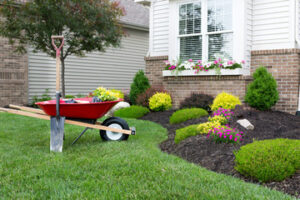The roof is one of the most important components of a home. Without it, everything inside would be ruined.

When your roof reaches the end of its lifespan it will need to be replaced. A roof replacement involves removing the old shingles and the underlayment as well as the flashing and replacing it with new materials. Contact Roof Replacement Riverview for professional help.
The cost of roof replacement depends on many factors, including the type and material used. For example, asphalt shingles tend to be cheaper than metal and slate roofs. The size of the roof also plays a role in cost. A larger roof requires more materials and labor, which drives up the price per square foot.
In addition, the complexity of the roof also influences the cost. A rooftop with a lot of slant and level changes, or one that includes a number of dormers, chimneys, or other features, will be more costly to replace than a simple two-story home with a flat roof. The cost of removing the old roof and repairing any underlying damage also affects the overall bill.
Another factor that impacts the cost of a new roof is its location. If the home is located on a hill, it can be more expensive to transport roofing materials up and down the hill, and to dispose of the old roof debris. Similarly, an uneven yard can increase the cost of a roof replacement because it will take longer to set up ladders and scaffolding for accessing the rooftop.
Unlike reroofing, which is a quick fix that only delays potential leaks, a complete roof replacement involves replacing all the components of your roof, from the vapor barrier to the shingles. While this may be more expensive in the short run, it will provide you with a more durable and energy-efficient roof that adds value to your home.
A roof replacement also allows you to upgrade the materials and add features that may not have been feasible with a reroofing project. For instance, you can install skylights, add vent holes to improve attic ventilation, or replace flashing around sanitary stacks, projections, valleys, and along dormers.
The final factor that influences the cost of a roof replacement is the type and condition of the existing structure. For example, if there are water traps in the gutters that direct too much water to one spot, it will cause your shingles to wear out faster and lead to more frequent repairs. In such cases, it is a good idea to include costs for addressing the water traps in your budget.
Durability
The roof is a critical part of a home, protecting everything from living spaces to the contents of the attic. When it comes time to repair or replace the roof, homeowners must consider multiple factors such as the cost and long-term durability of the new structure. A professional inspection is crucial to a successful decision that balances budget constraints and energy efficiency. The scope of the work is also a significant consideration.
If the shingles or other materials have reached their expected lifespan, it is likely that a roof replacement is the best option. In addition to addressing potential leaks, a complete roof replacement can add structural integrity and improve insulation and energy performance.
Generally, asphalt shingle roofs last 15 to 20 years, while metal and slate roofs can last more than half a century. However, the longevity of a roof is dependent on its type, climate, and maintenance. Regular inspections by a certified professional can help prevent damage and identify issues before they become costly repairs or replacements.
In addition to enhancing the look of your home, a roof replacement can increase resale value. A fresh, updated roof is one of the first things prospective buyers notice. Many buyers will negotiate the price of your home if it has recently been renovated and features high-quality roofing materials.
While reroofing offers some cosmetic perks, it is a temporary fix for leaking. The shingles, flashing, and underlayment will eventually wear out, leaving the home vulnerable to water infiltration. A roof replacement removes all of these elements, ensuring that the new materials offer peak performance and longevity.
A complete tear-off of the old roofing material provides a good opportunity for the roofers to inspect and make necessary repairs to the underlayment and the roof deck. The underlying components are often forgotten, but repairing these issues early will extend the life of the new roof. In addition, replacing the entire roof with resilient materials will future-proof it against more harsh weather conditions. This is particularly important if your region frequently experiences severe weather events.
Warranty
Considering how much of an investment a new roof is, homeowners need to feel secure in the knowledge that their investment will be protected. As such, many roofing contractors offer warranties with their services. However, not all warranties are the same, so it is essential that homeowners understand what to look for in a warranty and what to avoid.
Manufacturer warranties cover a variety of issues, from material defects to workmanship errors. They typically last for 20 years or more, and some manufacturers even offer ‘lifetime’ warranties. Contractor warranties, on the other hand, focus on workmanship and generally have shorter durations. They also vary in coverage details, including the specific types of defects covered and whether labor is included.
While these warranties are a good starting point, homeowners should consider adding an extended warranty to provide additional protection. While these warranties are more expensive, they can protect against the unexpected costs of roof repairs and maintenance. When comparing warranty options, homeowners should consider the duration of the extended warranty and the cost of any additional fees involved.
To file a warranty claim, homeowners must have thorough documentation on hand. This includes the original contract, proof of purchase for roofing materials, and inspection reports from the roofing contractor. In addition, any unauthorized repairs or modifications to the roof can void the warranty. In order to keep their warranty in effect, homeowners should also perform routine maintenance tasks such as cleaning gutters, removing debris, and inspecting for damage.
It is also important to keep in mind that roofs are susceptible to storm damage, and warranties may not cover all issues related to storm damage. For example, if high winds reveal a manufacturing defect in shingles, the faulty shingles will be replaced under the manufacturer’s warranty. However, the warranty does not cover the resulting damage caused by the wind.
Another thing to keep in mind is that some warranties are transferable when the property changes ownership. This can be a valuable feature for homeowners who plan to sell their homes in the future. To transfer the warranty, homeowners must follow the provider’s instructions, which may include paying any applicable fees and submitting required documents.








